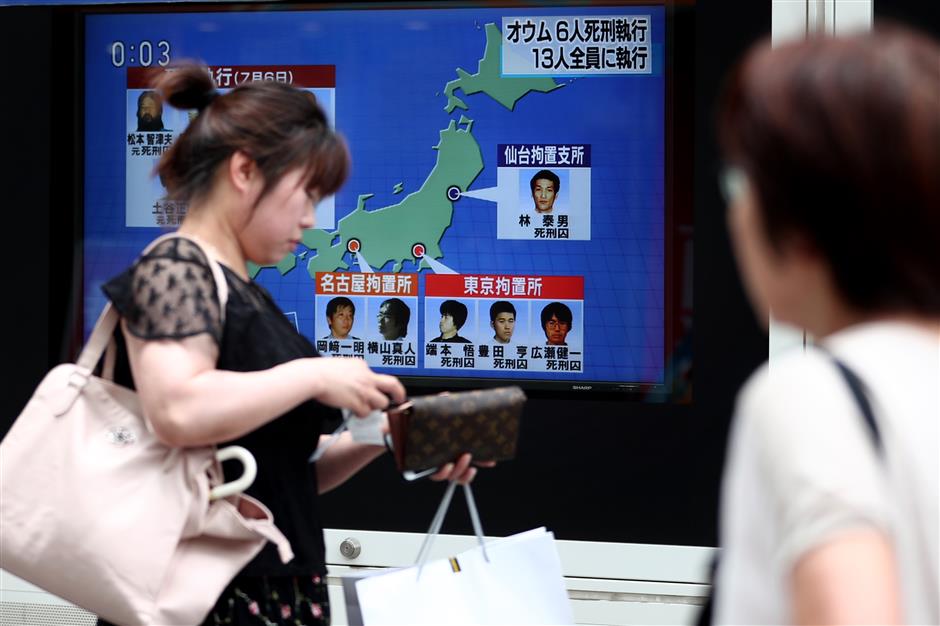Japan executes sarin attack cult members

Pedestrians walk past a screen showing a TV news channel reporting on the executions of six members of Aum Supreme Truth doomsday cult, in Tokyo on July 26, 2018.
Japan on Thursday executed six more members of the cult behind the deadly 1995 sarin attack on the Tokyo subway, weeks after the group's leader was hanged.
Justice Minister Yoko Kamikawa confirmed that the six Aum Shinrikyo cult members remaining on death row had been executed on Thursday morning.
"I ordered the executions after extremely careful consideration," she said at a press conference.
The executions come after authorities hanged "guru" Shoko Asahara and six of his one-time followers earlier this month, after years on death row.
Thursday's executions draw a line under years of legal wrangling and public soul-searching over the group and its crimes.
But those affected by the Aum's crimes said it would be hard to simply move on.
"With the 13 members executed, perhaps the case is closed from the point of view of criminal justice," Shizue Takahashi, whose husband was killed in the subway attack, told reporters.
"(But) the damage done to the victims continues even after the executions. I find it very hard."
The additional executions had been widely expected, and while Japan is one of the few developed nations to retain the death penalty, public support for it remains high despite international criticism.
"I think we can't avoid capital punishment for those who have committed extremely heinous crimes," Kamikawa said.
Local media said authorities wanted to execute all Aum members on death row before the country's emperor abdicates next year, which will start a new imperial era.
As the Aum's crimes were committed within the Heisei era of the current emperor, authorities wanted the executions to be carried out before the new era begins, local media said.
The Aum gained international infamy with the 1995 sarin attack on the Tokyo subway during rush hour, which killed 13 people and injured thousands more.
Members of the group released the chemical in liquid at five points through the subway network, and soon commuters began struggling to breathe, staggering from trains with their eyes watering.
Others keeled over, foaming at the mouth, with blood streaming from their noses.
The attack plunged the capital into chaos, and prompted a crackdown on the cult's headquarters in the foothills of Mount Fuji, where authorities discovered a plant capable of producing enough sarin to kill millions.
Aum members have also been convicted of an additional sarin attack in the town of Matsumoto the year before the Tokyo attack, as well as the murder of an anti-cult lawyer and his family.
The 13 cult members spent years on death row as prosecutors investigated their crimes, while some activists opposed the executions, fearing the members would be elevated to the status of martyrs.
But victims of the group's attacks welcomed the July 6 execution of Asahara and six other Aum members.
One man who was injured in the subway sarin attack told AFP he felt "the world had become slightly brighter" when he heard news of the executions.
Asahara developed his cult in the 1980s, and at one point the wild-haired "guru" had at least 10,000 followers, including the doctors and engineers who produced the group's chemical agents.
Despite the crackdown on the Aum, it was never formally banned.
It officially disowned Asahara in 2000 and renamed itself Aleph, but experts say the former guru retained a strong influence before his execution.















